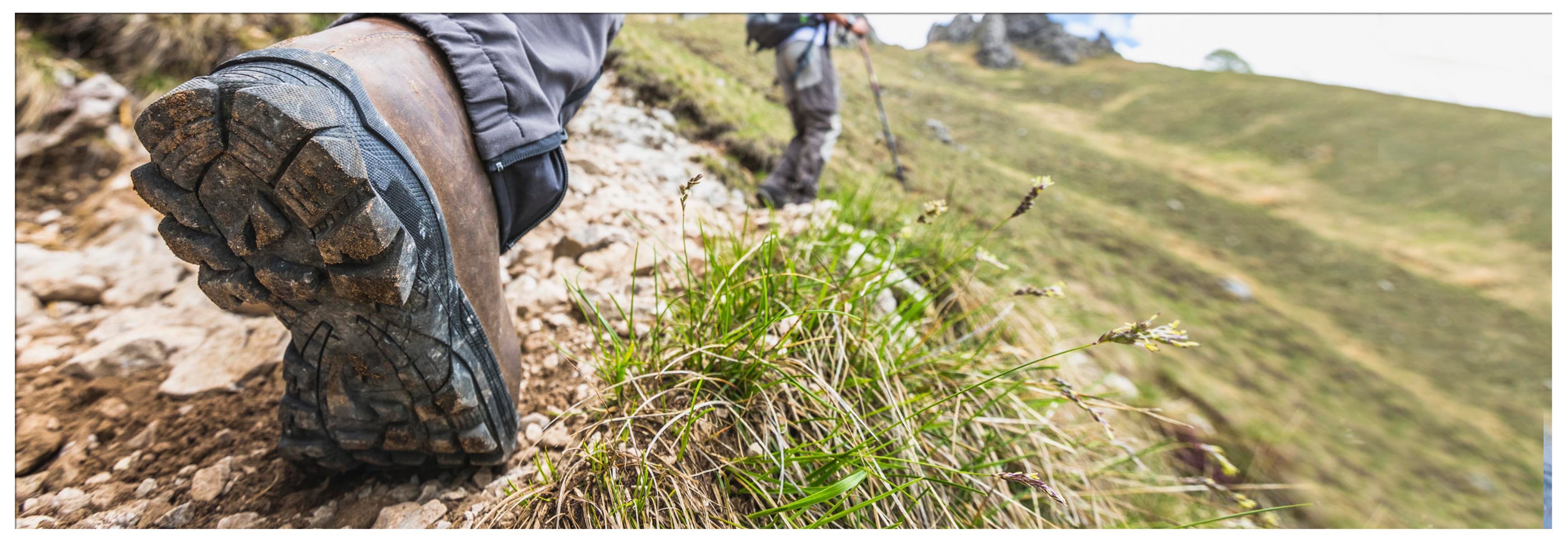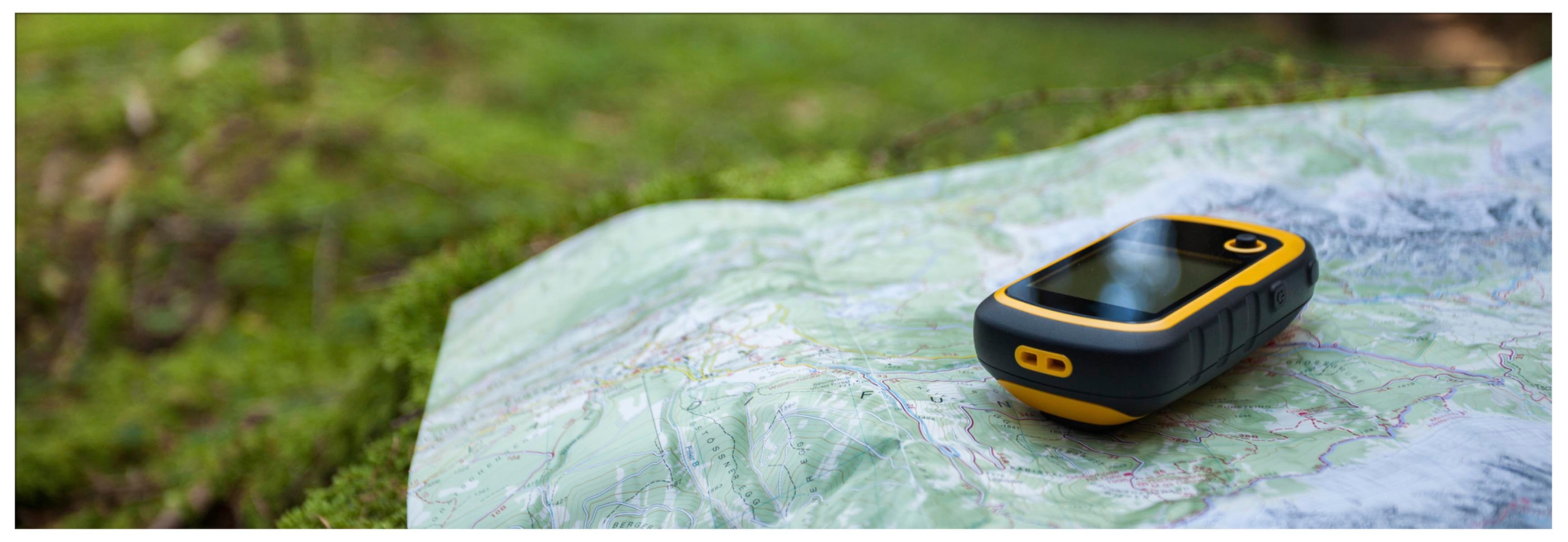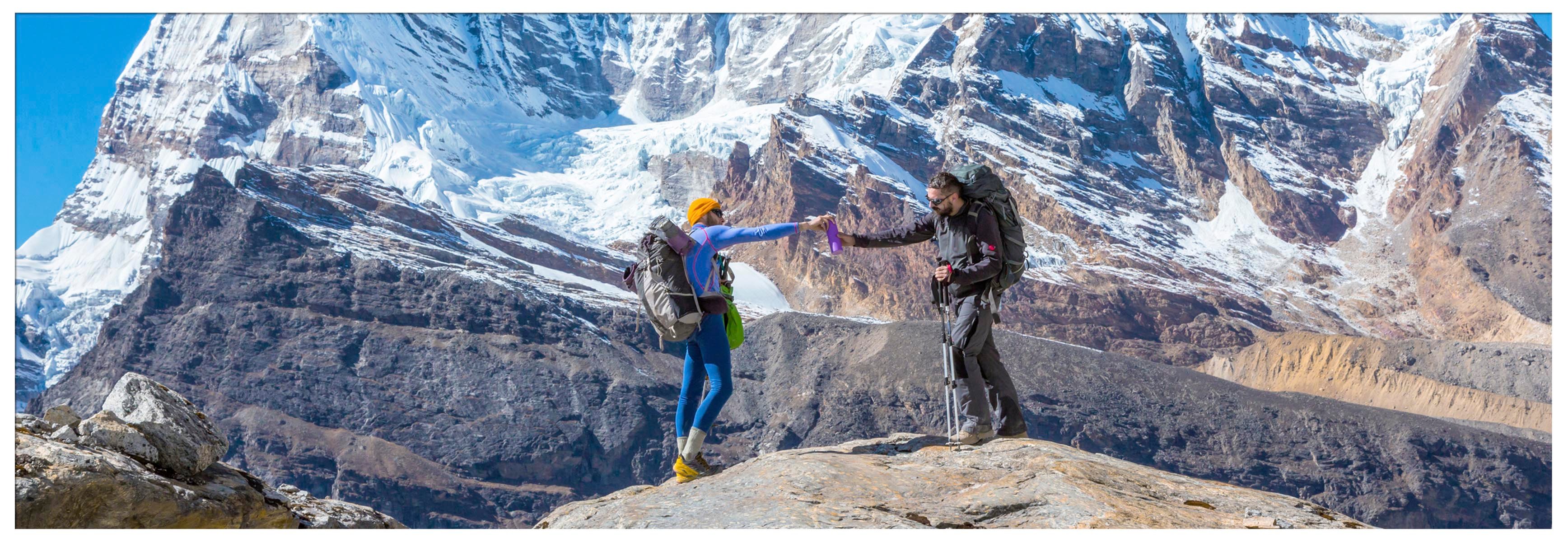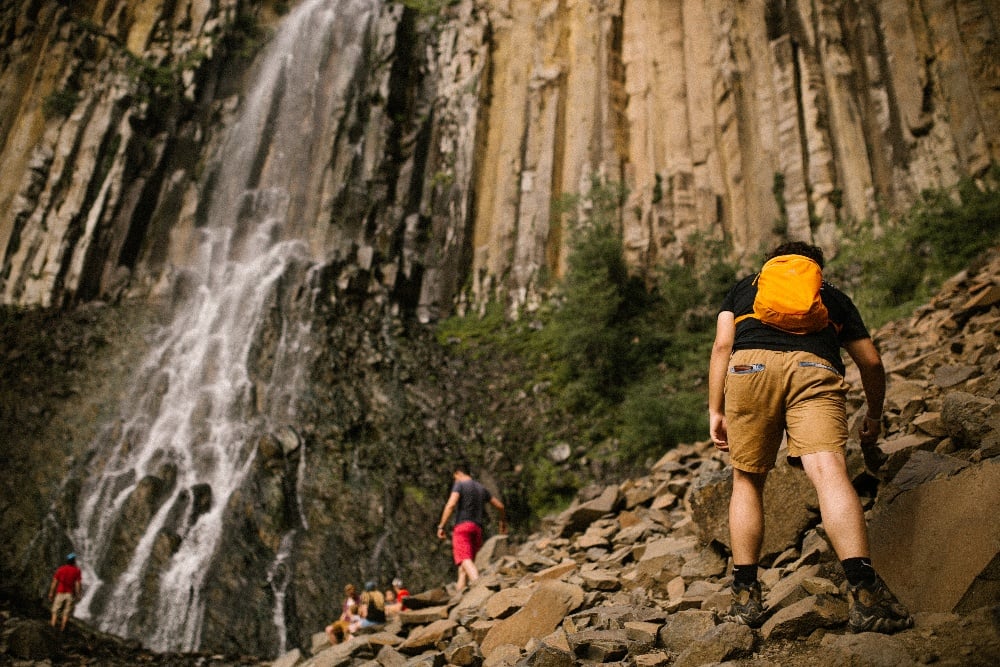10 Tips for Responsible Hiking
Experiencing our wild spaces up close and personal is something everyone should be so lucky to do. The intimacy of seeing wildlife in their habitat, thick vegetation, dynamic weather patterns, and sheer beauty — it does wonders for the soul. But as more and more people venture out, it’s not just important to keep the trails in good order but to look out for your well-being. Weather can be more intense in the mountains, and if you run into trouble out in the wild, getting help may not be as straightforward as it is in other places. Here are a few safety tips to keep in mind before heading out.
Stay hydrated
As a general rule, you need a half-liter of water per hour during moderate activity and temperatures. At high elevations, you can tend to feel less thirsty, so be sure to stay on top of it and drink BEFORE you get thirsty. If you’re going on a long hike or backpacking trip, you’ll need to restore your electrolytes. Sports replacement powders can be added to your water, or you can pack snacks such as peanut butter, bananas, olives, nuts, or dried fruits.
Be diligent about sun protection
The atmosphere is thinner at high altitudes, which means it filters less UV radiation. Above 9,000-10,000 feet, UV rays are 35-45% more intense than at sea level. Be sure to use a broad-spectrum sunscreen as well as lip protection, a hat, and long clothing. It may seem counterintuitive to cover up when it’s hot out, but it doesn’t take much to sunburn at these elevations.

Make sure you have solid shoes and good socks
Hiking footwear has come a long way—now you can dial in just the right boot depending on the length and intensity of your hike. Hiking shoes are great for day hiking or short trips with a light load. For longer trips, look for something with more ankle support, and no matter the shoe, be sure to break it in before hitting the trail! Socks are also important. A wool blend is still your best option. Wool regulates temperature, wicks away moisture and is antimicrobial, (meaning, less smell!)
Pack plenty of snacks
If you’re on a rigorous hike or short backpack, you’ll burn 3-4,000 calories per day. For through-hikers doing 30 plus miles per day, that number can almost double. Try to carry calorie-dense snacks (around 120-130 calories per ounce) such as nuts or bars. Be sure to carry out all of your trash, even things such as banana peels, which can take a while to decompose and also attract bears.
Allow ample time for your hike, including the time to rest along the way
It generally takes the average person 30 minutes to hike a mile at a gradual incline. If you’re cutting it close, it’s best not to risk getting stuck on the trail at night; the dark skies are beautiful for gazing at, not so much for hiking under!

Download GPS maps to your phone before leaving
Cell service can be spotty in the mountains, but these maps will work without an internet connection. It’s a good idea to tell someone where you are hiking, along with when you plan to return.
Stay on the trail
This isn’t the time to take the road less traveled; going off trail can damage fragile plants, erode trails, or even get you cliff-bound! It takes a lot of work to maintain trail systems, and it’s even harder when separate trails start splitting off. Keep the areas pristine.
Be a respectful pet owner
This goes beyond just picking up after your animal; it means ensuring they aren’t interfering with other people who may not love pets as much as you do. If the trail doesn’t have water, consider getting a pack for your pup to carry their water supply.

Heed the right of way
Hikers, bikers, and horseback riders share many trails. The hierarchy of order is as follows: horses first, followed by hikers, then bikers. When letting horses pass, it’s best to stand on the downhill side of the horses. If they spook, they tend to bolt uphill, so this will help keep you safe. When crossing paths with others, those going uphill have the right of way, step aside, so they don’t have to break their stride heading up. When being passed, heed the same rules as traffic and keep to the right so people can go around you. If you’re taking photos or videos, stay aware of those around you, and try not to hold people up, allow them to pass on by.
Smile!
Be friendly to fellow hikers, and most importantly, pause often to take in the sheer beauty of our wild spaces. It doesn’t get much better than this!
If you enjoyed this blog, take a look at some of our other related articles:
- Plan the Perfect Day Trip to Yellowstone National Park from Bozeman
- What Is The Best Time To Visit Yellowstone?
- How To Get To Yellowstone National Park From Bozeman, MT
In our never-ending quest to keep up with all things new in Bozeman, we have been producing content for years and can't possibly update every blog when new businesses open or existing businesses close. Please reference the publish date and do your own due diligence when making plans.


